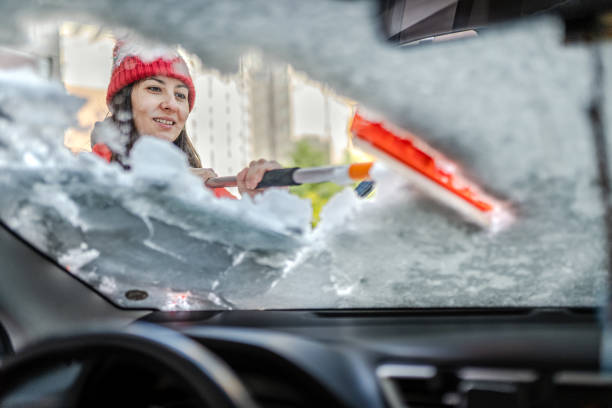Winter is a season of beauty and adventure, but it also comes with unique challenges. From icy roads to freezing temperatures, preparing for these hazards is essential to staying safe. This guide provides practical winter safety tips and strategies to help you maintain peace of mind during the cold months.
Preparing Your Home for Winter
A safe winter starts at home. Taking preventative steps can reduce the risk of damage and ensure your household stays comfortable and secure.
Insulate and Weatherproof
Ensure your home is well-insulated by checking windows, doors, and walls for drafts. Use weatherstripping around doors and caulking around windows to keep the cold air out. This not only enhances comfort but also reduces energy bills.
Maintain Heating Systems
Schedule professional inspections for your heating systems, including furnaces, boilers, or space heaters, before the cold season begins. Replace filters and inspect chimneys to prevent blockages or fire risks. Always have a backup heat source, like a safe and efficient space heater, in case of emergencies.
Prevent Frozen Pipes
Frozen pipes can burst, causing costly damage. To avoid this, keep your thermostat consistent, even when you’re away. Wrap pipes in high-risk areas with insulation and leave faucets trickling on very cold nights.
Stock Emergency Supplies
Winter storms and power outages are unpredictable. Maintain an emergency kit with essentials such as non-perishable food, water, flashlights, batteries, and a first-aid kit. A backup generator is also a good investment for extended outages.
Staying Safe on Winter Roads
Winter driving presents significant risks due to icy and snowy conditions. Proper preparation can keep you safe during your travels.
Equip Your Vehicle
Prepare your car for winter by ensuring it has snow tires or all-weather tires with sufficient tread. Check your battery, brakes, windshield wipers, and fluid levels. An emergency kit for your vehicle should include blankets, a flashlight, jumper cables, a shovel, and sand or kitty litter for traction on ice.
Drive with Caution
Slow down and increase following distances when driving in snowy or icy conditions. Avoid sudden movements like sharp turns or abrupt braking, as these can cause your vehicle to lose control. If you feel unsafe, wait until conditions improve before hitting the road.
Plan Ahead
Before leaving home, check the weather forecast and road conditions. Inform someone of your travel route and estimated arrival time. If a storm is expected, consider delaying non-essential travel to stay off the roads.
Dressing for Extreme Cold
Exposure to freezing temperatures can lead to frostbite or hypothermia. Dressing appropriately can protect you from the cold while still allowing freedom of movement.
Choose Layers Wisely
Wear multiple layers to trap heat effectively. Start with a moisture-wicking base layer, add an insulating layer like fleece or wool, and finish with a waterproof and windproof outer layer.
Don’t Forget Accessories
Protect extremities like your hands, feet, and head, which lose heat quickly. Insulated gloves, thick socks, boots, and a thermal hat are essential. Use a scarf or mask to shield your face from wind and frostbite.
Stay Dry
Wet clothing reduces body heat rapidly. Invest in waterproof outerwear and carry extra clothes to change into if you get wet. Pay special attention to your feet, as damp socks can lead to frostbite.
Reducing Risks Outdoors
Recreational activities such as hiking, skiing, or snowboarding are wonderful in winter but come with their safety concerns.
Monitor Weather Conditions
Always check the weather and avalanche forecasts before venturing out. Sudden weather changes can be dangerous, so be prepared to modify your plans based on conditions.
Stay Visible
Shorter days mean reduced visibility. Wear reflective clothing and use headlamps or flashlights to ensure you’re seen by others, especially at dawn or dusk.
Gear Up for Safety
Investing in the right gear can make all the difference. For example, products like the Snow Defender 4500 are designed to improve traction, keeping you safer during outdoor activities or even when clearing snow. Use equipment suited for the activity and ensure it is in good working condition before heading out.
Travel with a Buddy
Never venture into remote or challenging conditions alone. Having a companion can provide immediate help in case of injury or emergencies. If this isn’t possible, at least inform someone of your plans.
Protecting Pets During Winter
Our furry friends need extra care during the colder months. Keep these tips in mind to ensure their safety.
Keep Them Warm
Provide pets with warm bedding indoors. Limit their exposure to extreme cold and never leave them outside for extended periods.
Check Paws Regularly
Ice, salt, and chemicals can irritate and harm your pet’s paws. Wipe them clean after walks, and consider pet boots for extra protection.
Watch Food and Water
Increase food portions during winter to help pets generate heat, but always provide fresh, unfrozen water. Heated water bowls are a great option.
Preparing for Winter Emergencies
Preparation is the key to overcoming unexpected situations. Here are some general tips to stay ready.
Know First-Aid Basics
Familiarize yourself with first-aid steps for common cold-weather injuries like frostbite or hypothermia. This knowledge can make a critical difference in emergencies.
Stay Connected
Keep your phone fully charged and consider purchasing a portable power bank. Reliable communication is crucial during power outages or prolonged trips.
Maintain Situational Awareness
Monitor weather alerts and advisories from trusted authorities. Awareness of your surroundings and potential hazards can help you make smart, safe decisions.
Conclusion
Winter doesn’t have to be a season of stress. By taking these proactive steps, you can stay safe, comfortable, and prepared for whatever the cold months bring. Whether it’s preparing your home, gearing up for safe outdoor adventures, or protecting your loved ones, planning allows you to enjoy winter with peace of mind.



